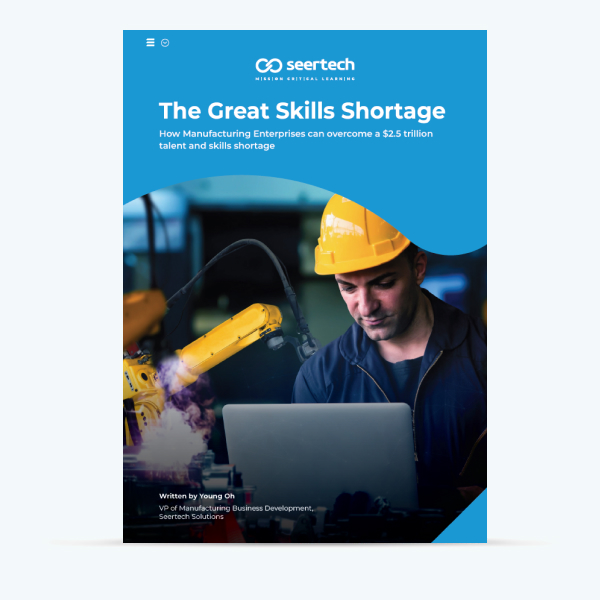Whitepapers
Seertech Manufacturing Whitepaper
Are you prepared for the ongoing skills and labor deficit?
Talent and skills shortages are likely to lead to 2.4 million unfulfilled manufacturing jobs by 2030 – how can manufacturers use successful industry examples to minimize impacts moving forward?
Disruption, increased job creation, and rapidly changing external conditions have been the key characteristics of US manufacturing over the past few years. Recent figures have come out that now bring a rapidly growing skills and labor deficit into the mix of issues manufacturers must navigate.
Companies need to understand what is influencing current operating conditions, where the impacts are being felt and what the best responses are – it’s a lot to bring together!
Take a minute to consider the following:
- The US is experiencing historically low unemployment while US manufacturing
job openings have been growing at double–digit rates since mid–2017 - According to the National Association of Manufacturers, approximately 10,000 baby boomers are retiring daily in the US. Approximately 2.7 million
manufacturing workers are aged 55+. - Deloitte research estimates that the semiconductor industry alone needs more than one million additional skilled workers by 2030. This equates to more than one million additional skilled workers by 2030, more than 100,000 new workers annually.
- 2.4 million manufacturing jobs are estimated to go unfilled due to the skills gap by 2030.
It’s not hard to see why the situation is gaining so much attention.
Seertech has put together a comprehensive Whitepaper that condenses this current complexity giving manufacturers the insights they need to navigate these challenges while still keeping pace with operating environments that are smarter and faster than ever.
This information will support manufacturers as they continue to do a remarkable job of growing, meeting customer needs, responding to external challenges and embracing exponential technological changes.
It’s an informative and important read and includes the following:
- The factors creating the current skills and talent deficit
- The top challenges related to this issue
- How manufacturers can respond to ensure minimal interruption to operations
- Why improved workforce and talent development strategies lead to increased retention and competitiveness
“84% of manufacturers believe a skills gap exists due to a lack of standardization in training.”

Download Seertech’s Whitepaper
"*" indicates required fields
Discover why hundreds of organisations are
choosing Seertech LMS Solutions.
Contact us today to see how we can help you!



